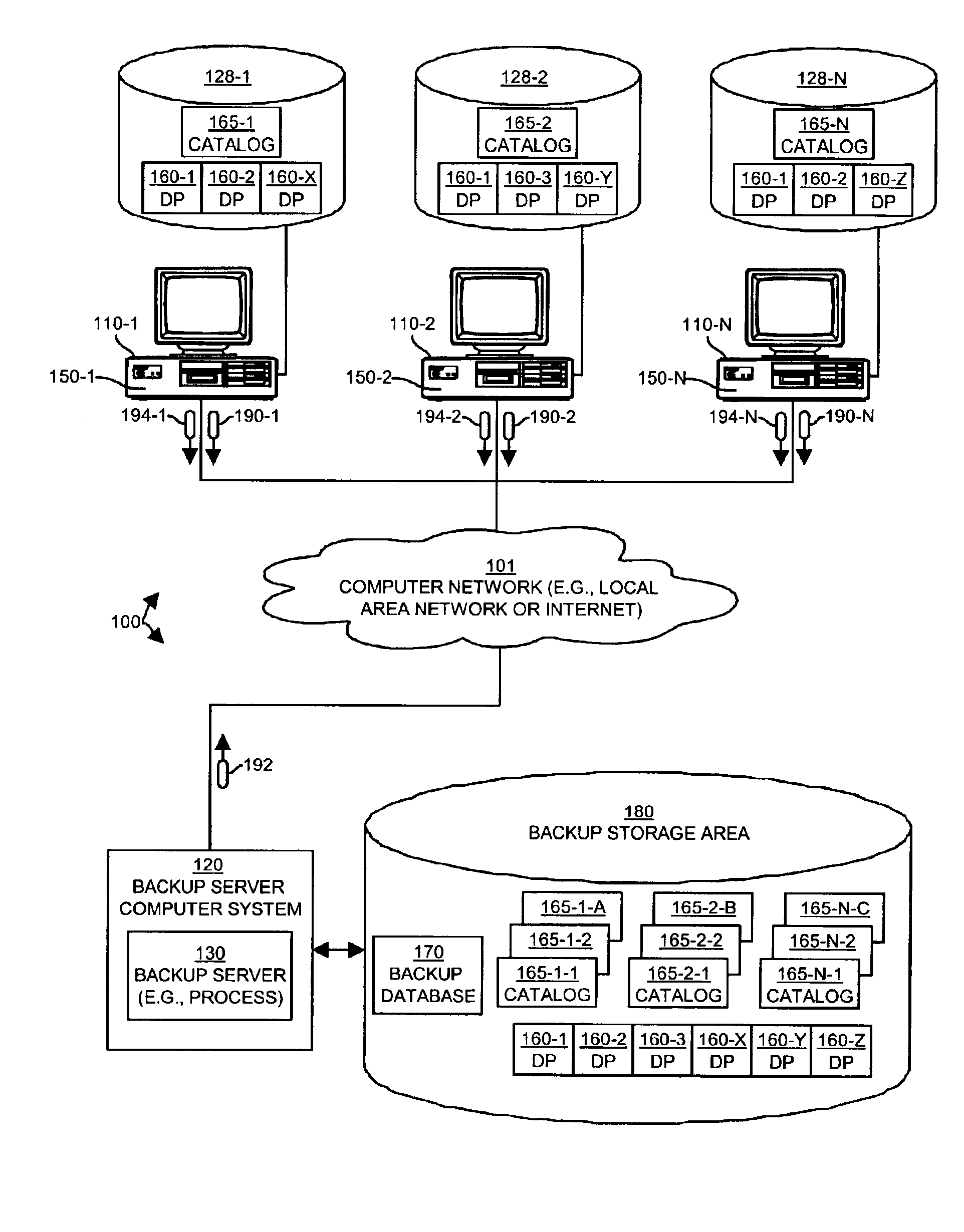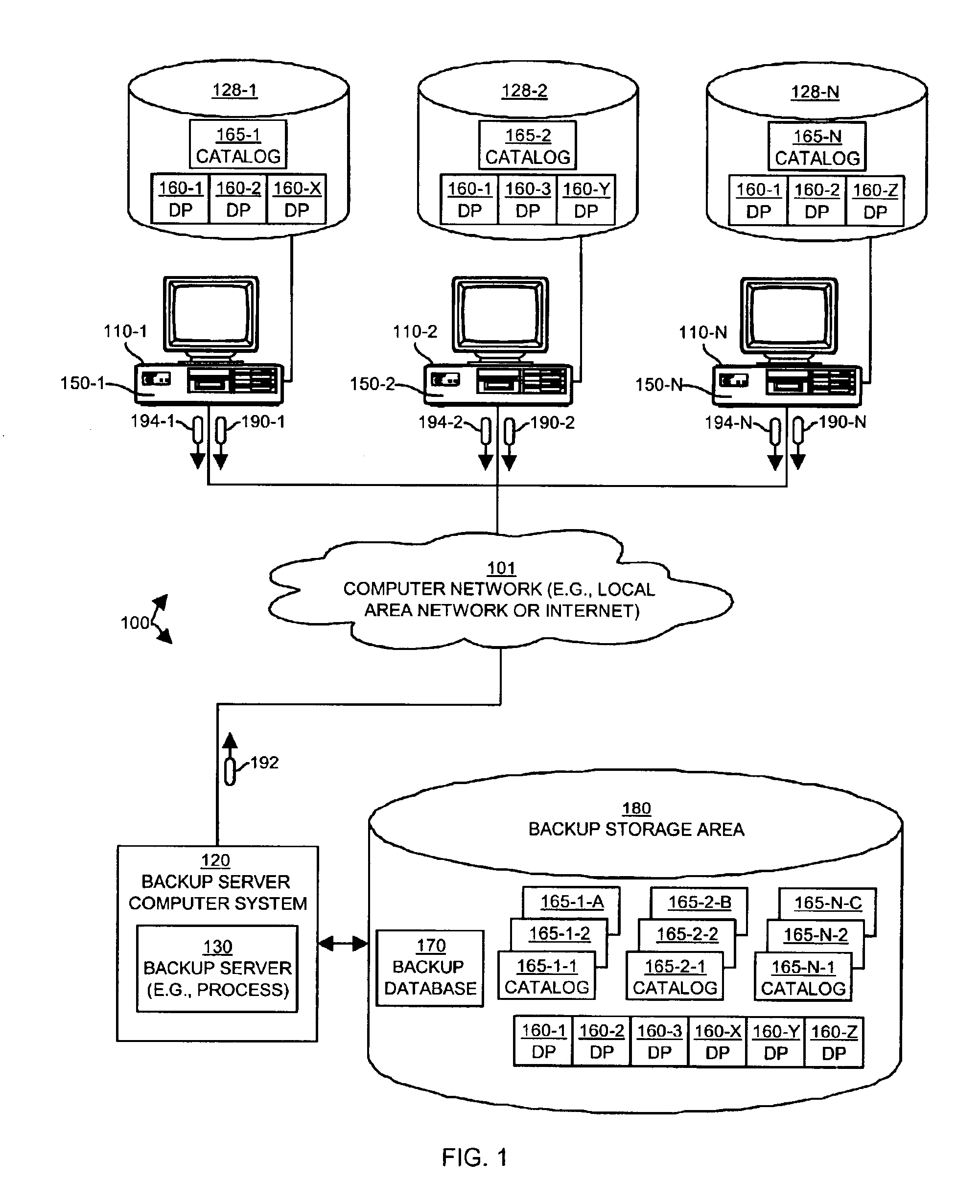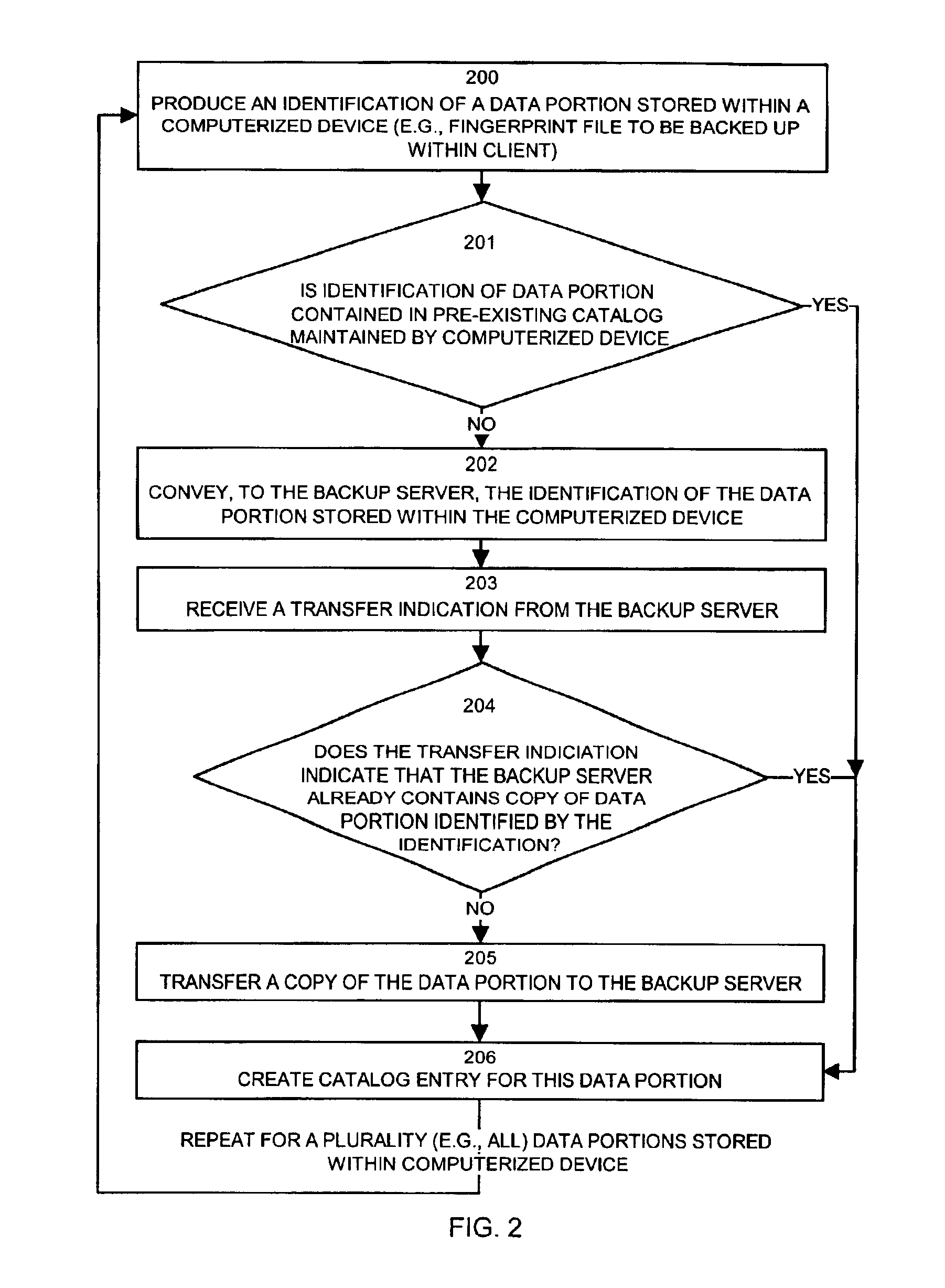It is important to note that one
advantage of the invention is that once one backup sequence is performed for a client computer system 110, subsequent back sequences will only require a need of the backup client 150 to transfer newly created data portions to the backup server 130. Any data portion that has been backed up at least once, even if not from the same location or the same computer (e.g., could be the same data portion with a different filename, or located in a different
directory in the same computer, or could be on another computer under another filename but for which that other computer has performed a backup sequence) eliminates the need for the backup client 150 to transfer the content of the data portion to the backup server 130.
is that once one backup sequence is performed for a client computer system 110, subsequent back sequences will only require a need of the backup client 150 to transfer newly created data portions to the backup server 130. Any data portion that has been backed up at least once, even if not from the same location or the same computer (e.g., could be the same data portion with a different filename, or located in a different
directory in the same computer, or could be on another computer under another filename but for which that other computer has performed a backup sequence) eliminates the need for the backup client 150 to transfer the content of the data portion to the backup server 130.
FIG. 2 is a
flow chart of
processing steps performed by a backup client 150 (i.e., an application operating as a process) configured according to one example embodiment of the invention to interact with the backup server 130 in order to backup data portions 160 stored within a local storage device 128 associated with a client computer system 110. Generally, the repetitive
processing of the backup client 150 performing the processing of steps 200 through 206 forms a backup sequence that the backup client 150 may perform, for example, on a nightly, weekly or monthly basis or at any periodic or user selected interval(s) on each of the client computer systems 110. Such a backup sequence may carry out a full backup or an
incremental backup. The discussion of the details of processing steps 200 through 206 in FIG. 2 (i.e., operation of a backup client 150) will be discussed in relation to their operation of the backup client 150-1 within the client computer system 110-1 illustrated in FIG. 1. It is to be understood that the operation of other backup clients 150-2 through 150-N in other client computer systems 110 perform similar operations.
In step 200, the backup client 150 produces an identification 194 of a data portion 160 stored within the computerized device 110 (e.g., the data portion 160 stored within the local storage device 128 associated with a client computer system 110). In one embodiment of the invention, the identification of a data portion 160 is a
fingerprint of the data portion 160 such as a hash value or
checksum of the content or data within a file or application that uniquely identifies the data portion and that is equivalent for each instance of a same data portion that may be stored in multiple locations within any one or more of the client computer systems 110. Thus, if two computerized devices 110 respectively store at least one instance of the same data portion, the identification produced in the step 200 is the same for each instance of the same data portion 160 when performed on any of the computerized devices 110.
Next, in step 201, the backup client 150 operating within the client computer system 110 determines if the identification 194 of a data portion 160 is contained within a preexisting catalog 165 maintained by (i.e., in some manner accessible to) the computerized device 110. As will be explained shortly, a catalog 165 is created during each backup sequence in order to store information about instances of data portions 160 that are to be backed up, whether or not the actual data for the data portion 160 is required to be transferred to the backup server computer system 120. As an example, suppose a user of a client computer system 110-1 creates, copies or otherwise instantiates a new instance of the data portion 160-1 (e.g., creates a new file or installs an application) in the local storage device 128-1. During this iteration of the backup sequence illustrated in FIG. 2 (i.e., during the repetitive execution of steps 200 through 206 by the backup client 150), the backup client 150 will discover the new data portion 160-1 and will produce an identification 194 (in step 200) of this data portion 160-1. If this data portion has never been “seen” by a backup sequence on this client computer system, then the identification 194, which is a unique
fingerprint of the data or content of the data portion 160, will not yet exist within the catalog 165-1. In addition, since the data portion 160-1 is a new file on this client computer system 110-1, other (i.e., older or previously created) catalogs 165 produced as a result of other backup sequences on this client computer 110-1 will not contain the identification of the data portion 160-1 either. Such older catalogs 165 may be cached locally by the backup client 150 for a past predetermined number of backup sequences, or at the beginning of a backup sequence, the backup client can obtain the previous catalogs 165 for this computerized device from the backup server 130.
In any event, as will be explained, the lack of the identification 194 in a catalog 165 indicates to the backup client 150 that this particular client computer system 110-1 has not yet backed up an instance of this data portion 160-1 to the backup server 130 (other computer systems may have however, as will be explained). Assuming the identification 194-1 of the data portion 160-1 is not contained in a preexisting catalog 165 maintained by the computerized device 110-1 performing this backup sequence, processing then proceeds to step 202.
 Login to View More
Login to View More  Login to View More
Login to View More 


